You may have heard about home automation in the news. Or friends and neighbors may have talked about how they’ve taken steps to make their houses “smart.” From convenience to safety to fun, home automation has many benefits. However, you might not know where to begin. For example, what should you do first, choose a smart hub or choose your devices? Do you start with lighting or temperature control? What’s the best smart home setup?
Don’t worry, in today’s guide, we’ll walk you through everything you need to know about smart homes. Including the definition, function, working principle of a smart home, and how to make your home smart. Read on to learn more.
1. What is a smart home?
As with any new technology, the meaning behind the buzzwords can be a little confusing. So, before we start talking about device compatibility and network technology, let’s try to define “smart home” as simply as possible.
By taking advantage of improvements in web technology and innovations in connected devices and voice recognition, it is now possible to bring many aspects of your home online – lighting, heating, entrances, entertainment systems, and even faucets. Lights that once had to be turned on and off with a switch can now be controlled with your voice. Thermostats that previously had to be adjusted manually can now be controlled remotely via smartphone. It’s automation like this – spread throughout the house – that makes a home smart. In other words, it’s the Internet of Things in the home.
The best smart home setups include an entire network of smart devices, allowing you to easily monitor and control any aspect of your home whether you’re at home or away. These smart devices, from doorbells to motion sensors to appliances, can connect to your smartphone or a single wireless hub via Wi-Fi or similar cellular frequencies. Each device can be controlled from your phone or via voice from a smart speaker.
But there is currently no single smart home concept. Your home can contain any number of devices you want to connect, depending on how complex you want your setup to be. Now that you have an overview of what a smart home is, let’s dive into some basics.
2. How do smart devices work?
As we discussed, a smart home is basically a network of connected devices. These devices communicate with each other by transmitting information along specific predetermined radio frequencies. Wi-Fi is a frequency that can be used by anyone with an Internet service and a Wi-Fi router.
Other wireless network standards such as ZigBee, Z-Wave, Thread, and WeMo have also emerged to help smart homes work. These standards are considered more efficient and less likely to interfere with your existing Wi-Fi connection. But unless you have an advanced setup with lots of battery-powered devices, Wi-Fi should be fine for your smart home network. (Many smart devices can run on Wi-Fi, but some don’t, so check the specs before buying.)
Important shopping tip: Before purchasing a smart device, make sure it is compatible with your smart hub.
Here’s a smart home challenge you may encounter: Not all smart hubs are compatible with these wireless standards. So, check which standards your smart hub or smart speaker supports and purchase the components accordingly.
3. What does a smart home do?
A connected home adds convenience and efficiency to your life by helping automate small tasks and chores. In other words, it will help you put some of your daily routines on autopilot so you have more time to do the things you love.
How can this technology be implemented in your home? You may already be familiar with some common smart home devices, such as smart lights and thermostats. But there are tons of devices coming online. Here are some examples of smart home components and their capabilities:
- Lighting – Indoor and outdoor lights can be controlled by voice, programmed to turn on when you arrive home, or scheduled to turn on at dusk and off before sunrise.
- Entryway – Smart doors can be locked and unlocked using voice commands. Video doorbells allow you to see who is approaching your home. The garage door opens automatically when you pull into the driveway.
- Kitchen – The coffee machine can be scheduled to start brewing when you wake up. The dishwasher and washing machines will send you an alert once the cycle is complete.
- Bathroom – You can voice control the lighting on the bathroom vanity by simply telling it to turn on or off. No need to touch with your hands. For example, a friend of mine is a bathroom vanity manufacturer, which makes a bathroom vanity that works with smart home systems.
- Entertainment – TV can be controlled with your voice. Stereo systems can be programmed to turn on when you enter a room.
- Home & Pets – Smart indoor cameras let you know the kids are home from school safely. Smart baby monitors allow you to monitor your newborn from the next room. Smart pet feeders allow you to refill your dog’s food bowl while you’re away from home.
- Landscaping – A robotic lawnmower can mow your lawn for you. (Yes, it’s true.) A sprinkler system can adjust watering based on the weather.
Almost all of these devices can be controlled from a smartphone, and many of them can be controlled using voice commands through smart speakers. You need to do some setup, but once everything is in place, it works like magic.
Here are two examples of home automation using smart devices:
- Let’s say the hallway leading to the kids’ room is dark and you can’t reach the light switch because your hands are full of their toys. Instead of throwing everything on the floor and fumbling for switches in the dark, you can just tell your smart speaker: “Hey Google, turn on the hallway lights.” And, presto – the lights in the hallway will follow your command Open.
- Or, imagine you’re at home with the kids, preparing dinner and waiting for a load of laundry in your smart dryer to finish. With the right smart device setup, you can tell Google Assistant to listen to your kids’ favorite Netflix shows using a Google Chromecast Ultra, guide you through a five-star chili chicken recipe, and then rerun the dryer cycle so your clothes don’t Let dry. No more wrinkles when you eat dinner—all effortless.
A smart device in your home can do some pretty neat things. But things get really interesting when you start stringing together action lists through the Smart Center. For example, you can create an advanced setup so that as soon as you park your car at home after a hard day at work, the garage door will open, the lights will come on, and your favorite Spotify station will start playing on your stereo Play and the thermostat will automatically turn off. Adjust your home to the perfect temperature when you arrive.
The possibilities are almost endless. Keep in mind that features vary by device make and model.
4. Benefits of smart home
Let’s face it, having a “home of the future” with stuff that instantly responds to your every command would be awesome. But beyond the obvious cool factor, home automation can make your life more convenient, safer, and more enjoyable. When you start creating a smart home system, you can focus on just one of these goals or all three.
However, as with any home improvement, there are costs involved. So let’s take a look at the pros and cons of smart homes. First, you can enjoy some of the benefits of a smart home:
- Convenience – Imagine not having to walk back and forth 10, 20, or even 30 times a day to turn on a light switch. Or trudging up and down the stairs, turning the thermostat up, then down, then up again. These may sound like some time savers, but you’ll soon get used to controlling appliances and other devices from your phone or, more easily, your voice.
- Security – Whether you are at home or away, smart devices can bring you and your family a sense of security. When someone approaches your home, wireless outdoor security cameras and smart doorbells can alert you. Smart smoke and carbon monoxide detectors will send an alert to your mobile device if something goes wrong. While you’re away, you can remotely control lighting and monitor indoor security cameras from your phone.
- Savings – With automatic heating, air conditioning, and lighting controls, you can save money on your energy bills. Schedule your thermostat to use less energy while you’re away, then adjust your home to the perfect temperature before you return. Set your exterior lights to turn on and off on their own without worrying if you leave something on overnight.
- Entertainment – Sync your entertainment system with your streaming library so you can stream music and videos on demand. A song pops into your head – ta-da! – You can command your smart assistant to start streaming it to your stereo: “Hey Google, play the Safety Dance.”
- For New Parents – Families with a newborn in the house may appreciate having another pair of eyes watching the baby. You can add a smart camera to your nursery so you know when your baby wakes up. There are also smart baby monitors that can send you alerts when your child cries.
As with any home improvement, it’s important to weigh the cost against your budget before getting started.
On the other hand, here are some of the disadvantages of making your home smart:
- Time and Effort – Even with our tips, creating a setup to your liking and then getting everything to come together perfectly can take some time. Fortunately, this upfront investment is usually a one-time cost. Once things are working the way you want, small adjustments (such as adjusting schedules or times) should be easy to make.
- Dependence on Wi-Fi – If you’ve ever experienced a slow internet connection due to devices hogging bandwidth, imagine how you’ll feel once your lights and appliances also rely on your home network. Some internet providers offer gigabit-speed internet, a service with enough bandwidth to support all your digital connections. However, availability depends on each provider’s technology and coverage.
- Technology Spread – Smart devices and speech recognition are two rapidly evolving technologies. As a result, the hardware you buy today may not support the next set of great features coming to market. If you’re the kind of person who always wants the latest and greatest equipment, keep this in mind.
But, for many, these obstacles are nothing compared to the idea of having a future home that even Captain Picard would be jealous of.
5. What’s in a smart home?
A typical smart home setup includes lighting, thermostats, and speakers, all connected through a dedicated smart hub or smart speaker. The decision is ultimately yours. Your smart home should contain components that you will use and enjoy.
Here are some smart devices you can consider adding to your home:
- Lamps and light switches
- Sockets and power plugs
- smart thermostat
- Speakers and sound systems
- media streaming device
- Smart door lock
- video doorbell
- Surveillance cameras
- garage door opener
- Smart smoke and carbon monoxide detectors
- Coffee machine
- washer and dryer
6. How can I make my home smart?
Okay, we hope you’re excited about the concept of a smart home and your brain is already thinking about fun and time-saving automation you can add to your house. If so, that’s great! Now, where to start?
This is a home improvement project where taking a few minutes to plan things out at the beginning will pay huge dividends in the end, saving you time, money, and frustration. Let us walk you through this part, and then we’ll get to the fun stuff: adding devices and turning on your smart home.
1) Step 1: Set a budget and timeline
There are two ways to automate your home: Add one or two devices at a time and group them together, or add a smart hub and many devices at once. It’s the difference between dipping your toes in the pool and diving headfirst into it.
For some, the budget may dictate how you go about it. Buy some smart light bulbs and smart speakers so you can control them with your voice for only a hundred bucks. Add a video doorbell, a smart thermostat, and a garage door opener and you’re looking at spending hundreds of dollars. Start shopping for new appliances and, not surprisingly, you’ll find thousands of new appliances. Others may just want to see how they like the benefits of automation before spending the time and money on a full setup.
No matter which category you fall into, you should make a choice before you start buying components because it will determine how you control your smart home.
When shopping for equipment, here are a few things to keep in mind: Let’s face it, it’s easy to get caught up in the rush of buying the latest and greatest equipment. But without proper planning beforehand, a smart home can become an expensive luxury. To prevent overspending, why not take some time to create a budget and think about the equipment you really need or want, the ones that will really improve your quality of life or save you some money? (On the one hand, a smart thermostat might help reduce your energy bills. On the other hand, does Lola really need her own automatic dog bowl?)
To prevent overspending, take a few minutes to create a budget based on the equipment you really want.
2) Step Two: Determine What You Want Your House to Do
Before you start spending money on equipment, it’s important to ask yourself what your goals are. In other words: What do you want your smart home to do for you? Would you like to use some basic automation and voice commands to make your life easier? Or are you hoping for a complete smart home renovation that will give you the most high-tech home on the block? Each requires time and effort, but each is more important than the last.
Starting with an end goal, you can build your setup around your needs rather than being limited to the capabilities of the device you purchased. Plus, as we’ll discuss later, this allows you to plan your smart home system so that devices pair together easily, which might not be possible if you buy things piecemeal.
3) Step 3: Choose smart devices for your home
Okay, now that you know your budget and smart home setup, it’s time to start adding devices. At this point, you need to decide whether you want a smart hub – such as Google Home, Amazon Echo, or Samsung SmartThings.
#1. To the hub or not to the hub?
If you only use one or two devices, such as a thermostat and a video doorbell, you can easily control them using your smartphone. But if you want to add a lot of components from different manufacturers, then a smart hub is the way to go.
Why? Having a Smart Hub allows you to control all components from one device, rather than switching back and forth between different apps on your phone, which can become cumbersome when you’re working with multiple apps.
Smart Center allows you to control all components using a single device instead of switching between apps on your phone.
Take for example the chicken chili powder we discussed earlier. If you have the right smart device, you can find great recipes from around the web, stream Netflix for the kids in the den, and start the dryer with your voice – all from your kitchen. Sounds good, right? But without a Smart Hub, you’d need four or five different apps on your phone to do it all: Google for recipes, Netflix and Chromecast for kids’ shows, apps to turn on the TV, and apps to control the washing machine. Dishwasher. It’s a lot of sliding back and forth.
Without a smart hub, all this app switching defeats the purpose of building a smart home. The right hub lets you control all of these devices with your voice, so it can be a sanity-saving investment: “Hey Google, play Dora on the TV in the family room.”
For a basic setup, a smart speaker like Google Home or Amazon Echo can serve as your hub. For more advanced setups involving location-based automation (such as actions triggered when you park your car), you’ll want a dedicated smart hub like Samsung SmartThings or Wink.
Here are some of the most frequently asked questions we see about these devices:
#2. Is Google Home a smart hub?
With Google Home, you can control your smart speaker with your voice. On top of that, it lets you enjoy music, manage daily tasks, and get answers to the things you want to know – completely hands-free. But Google Home can also act as a smart hub because it’s powered by Google Assistant. This means you can control compatible smart devices from Google Home. For example, just ask Google Home to stream video to your TV via Chromecast or turn on your Nest thermostat. You may not have to think twice when choosing Google Home as your hub if you already own one or more Google devices.
#3. Is Amazon Echo a smart hub?
Echo is Amazon’s line of smart speakers. These devices, such as the Amazon Echo Show, can act as smart hubs thanks to the built-in Alexa voice assistant. Alexa is compatible with many types of smart home devices, including smart plugs, home theater systems, door locks, and more, making the Amazon Echo another good choice as a smart hub.
#4. What products work with Google Home?
More than 1,000 smart devices from more than 150 popular brands work with Google Home, including Nest thermostats and Canary home security systems. With so much flexibility built into it, Google Home is a great choice for your smart hub. Google Home lets you control compatible devices – lights, security cameras, TVs, and more – with your voice. Additionally, it works as a smart assistant, allowing you to access calendars, reminders, commute information, and more.
#5. Which smart hub is the best?
There is no best smart hub. It really depends on what products you have at home. There are two popular options: Google Home and Amazon Echo. But if you’re looking to take things a step further with home automation, you might want to consider a dedicated smart hub like Samsung SmartThings or Wink Hub. These can provide more customization options.
Of course, some people prefer certain brands. If you’re a Google fan, you’ll probably want to stick with Google Assistant and Google Home-enabled products.
If you’re on the fence, here’s a simple way to help you choose: Think about all the devices you’d like to add to your home, and then make sure the smart hub you’re looking for supports them all. On the hub manufacturer’s website, you can find a list of compatible devices. The good news is that if you want to add new components in the future, products with the same general functionality are often available for major smart home hubs.
4) Step 4: Now you are ready to start shopping
Once you’ve decided on a smart hub, it’s time to purchase the equipment.
The number of products available can make your choices seem a little overwhelming. If you need to narrow it down, limit your search to devices that can easily sync with your smart assistant. For example, if you use Google Assistant, you may want to continue using Google and Nest devices. (Nest is part of Google.) Whether you use Smart Hub or not, this will save you some time and trouble.
Here are some components you can add to your home:
- Smart Assistants – A Google Home, a Google Home Mini, and a Google Home Max are available.
- Smart switch for lighting and small appliances – Belkin WeMo Mini Smart Plug.
- Thermostats – Nest Thermostats E and Learning Thermostats.
- Video Doorbells – Nest Hello and Ring Video Doorbell2.
- Security Devices – The Nest Cam Indoor Security Camera and the Nest Cam Outdoor Security Camera are both Nest products.
- Smart speakers – TV sound system with JBL Link 10, JBL Link 20, JBL Link 300, and Bose Solo 5.
- Smart Streaming – Google Chromecast Ultra.
- Smoke and Carbon Oxide Detector – Google Nest Protect.
Of course, review the smart home concept you developed and keep your budget in mind.
5) Step 5: Set up your smart home and connected devices
Now we’re ready to dive into the nuts and bolts of getting a DIY smart house up and running.
Before you get started, to make this setup process as smooth as possible, take a moment to make sure you have everything you need to get started:
- Space available to unpack and use the device;
- Allow time to sync content to your phone or hub;
- Wi-Fi network covering the whole house;
- Most importantly, a fast, reliable internet connection and enough bandwidth to satisfy the needs of all these devices.
For the best smart home experience, make sure you have ample bandwidth and a strong connection, such as gigabit internet. This is because every device in your home communicates with the internet, using up a small portion of your home’s bandwidth. You also don’t want your smart assistant to slow down your streaming experience just because it’s updating tomorrow’s weather forecast.
To power your smart home, choose a strong, reliable internet service like Fios Gigabit Connection.
Just as important, your internet connection needs to be reliable. This is to prevent one of the big potential drawbacks of a connected home: if your internet connection goes down, your entire smart home setup can go down with it.
Finally, if there are areas in your home that Wi-Fi can’t reach, consider adding a network extender to extend your Wi-Fi network. This will prevent your device from falling into a coma due to losing the Wi-Fi signal from your home network.
6) Step 6: Get your smart home up and running
Now that you have your Smart Hub (if you choose to add one) and your devices selected, it’s time to connect everything together and make it work. Even though there are hundreds of types of devices from countless manufacturers, many smart devices tend to follow the same basic setup process when adding them to your home:
- Step 1: Download the manufacturer’s app to your phone.
- Step 2: Turn on the device and use the app to link it to your smartphone. Then, if you use Smart Center…
- Step 3: Open Hub Assistant on your phone and add new devices.
That’s it. Sounds simple, but as you’ve probably experienced before, connecting wireless devices together isn’t always smooth. If you have a problem, visit the manufacturer’s website for troubleshooting help or search YouTube for how-tos.
7) Step 7: Enjoy your smart home
Once everything is running on your smart hub or phone, it’s time to start enjoying your smart home.
Now you can do the following:
- Avoid tripping in a dark room when you use your voice to turn on the lights.
- Stay cozy when you turn up the thermostat without crawling out from under the covers.
- Smile as you save on your heating and air conditioning bills each month.
- Knowing that your home and family are being monitored by smart devices will help you sleep better at night.
Little smart home benefits like these can add up to make your life more enjoyable.
If you want to go deeper, check out examples of advanced smart home setups online for inspiration. With smart devices and location-aware automation systems, you can do some pretty amazing things.
7. Conclusion
Hopefully, this article has helped you demystify some of the terminology surrounding the subject, and by combining our tips with your imagination, It is our hope that you will be able to design one that you and your family will enjoy using. A smarter home! If you want to find a smart door lock that is right for you, please contact iLockey.

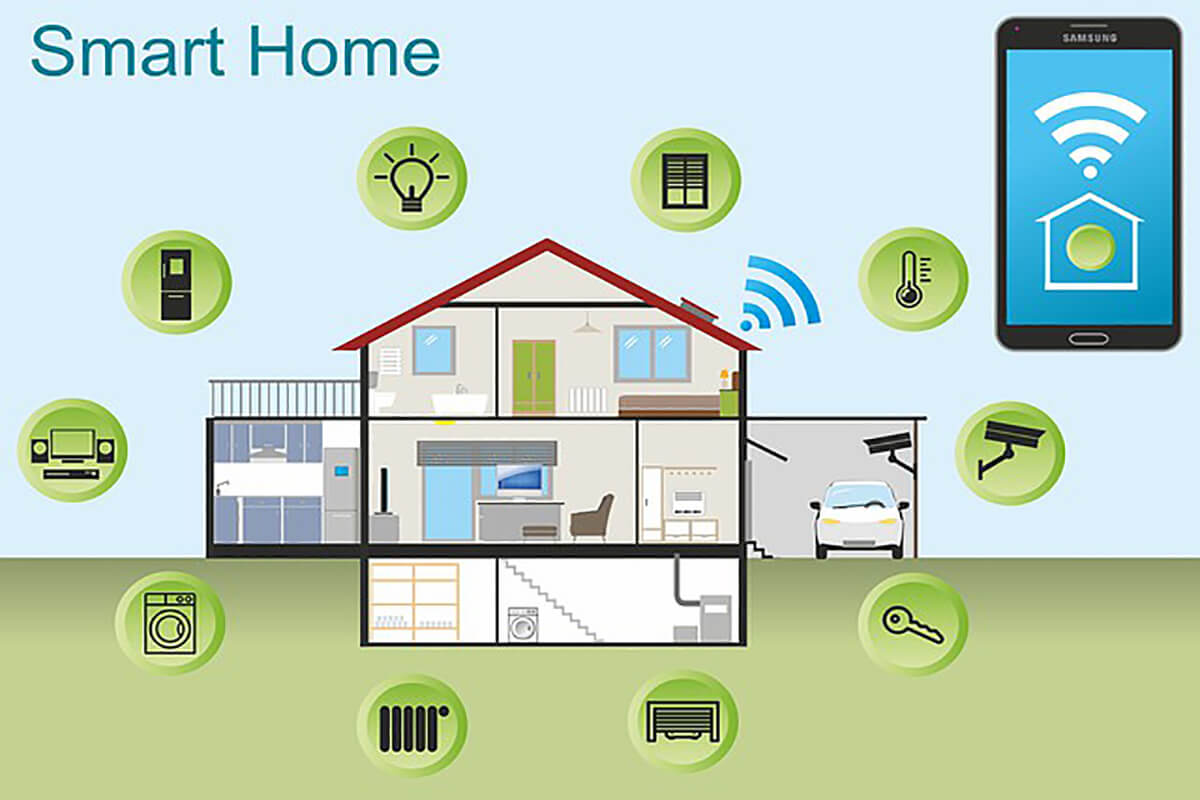
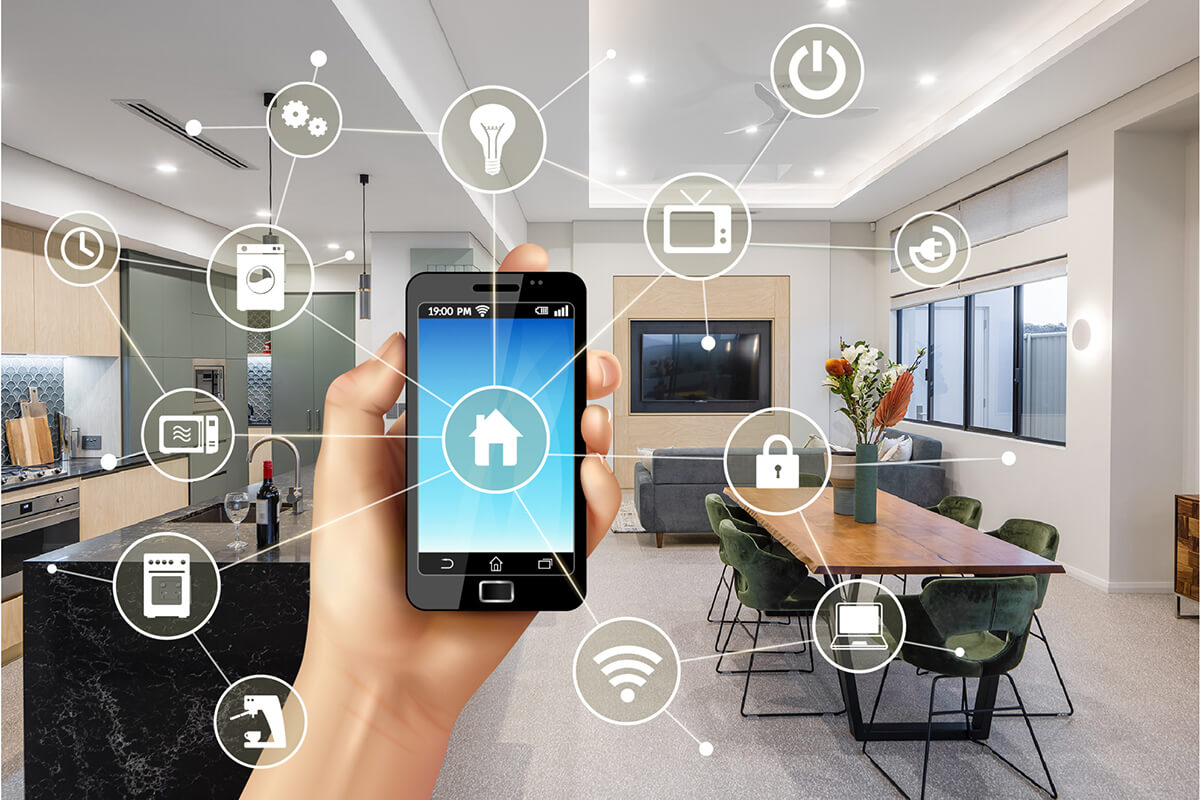
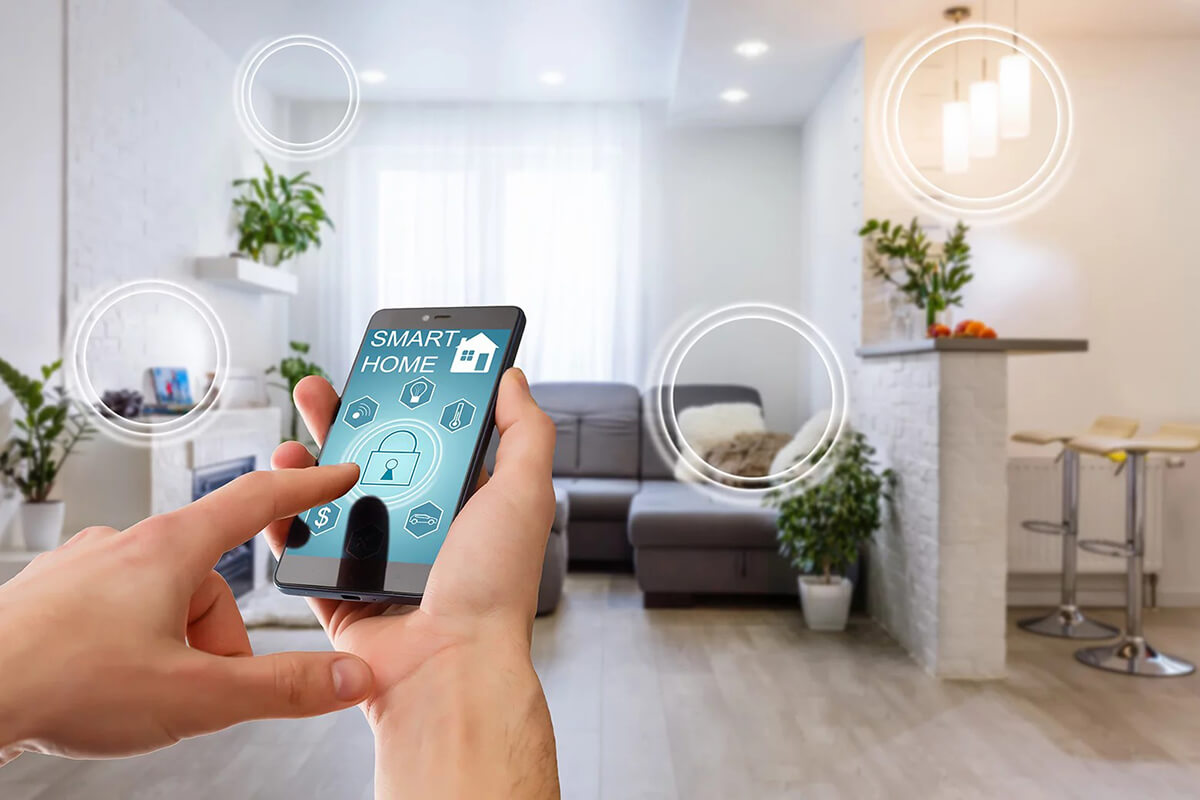

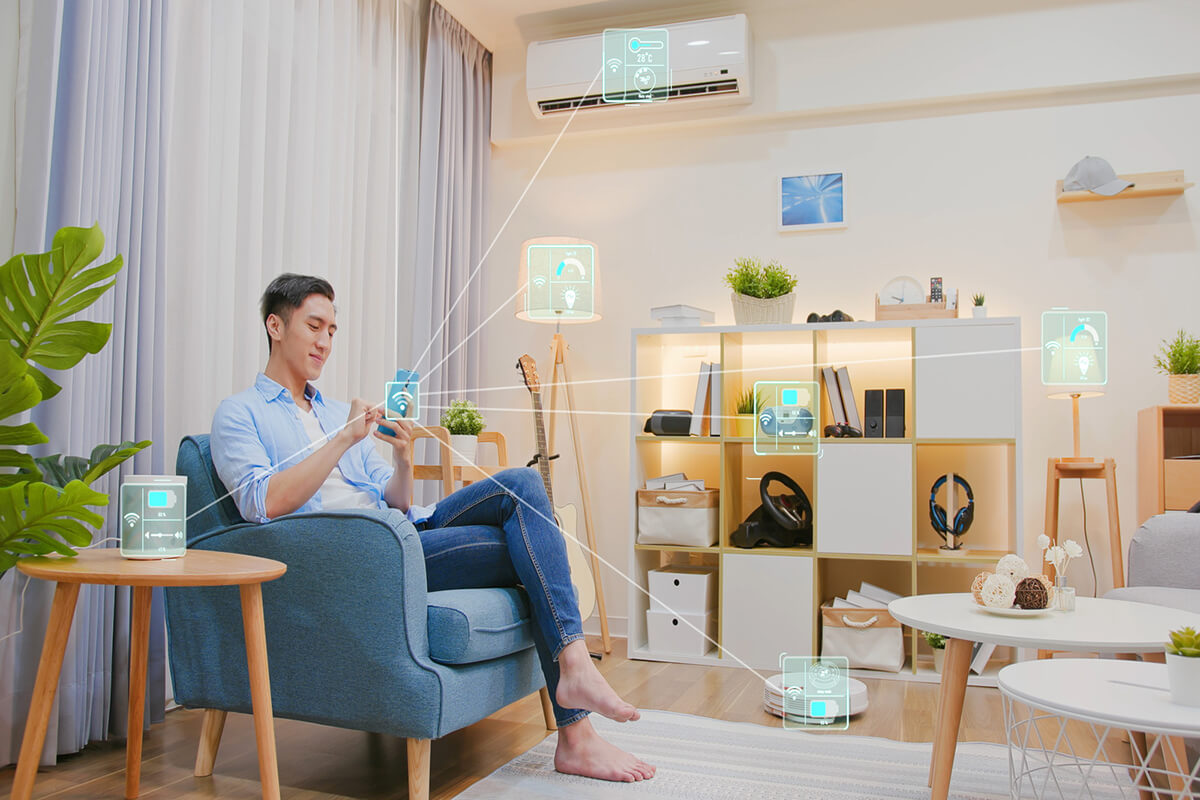
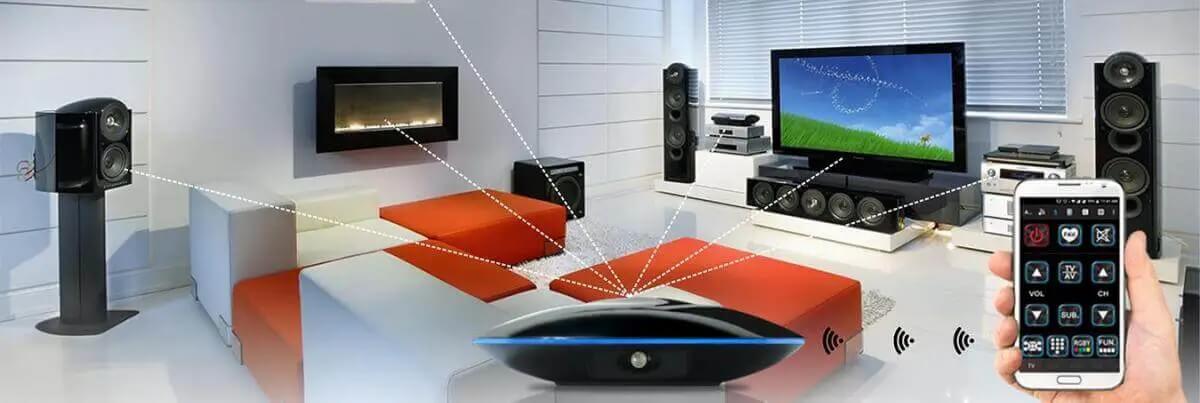
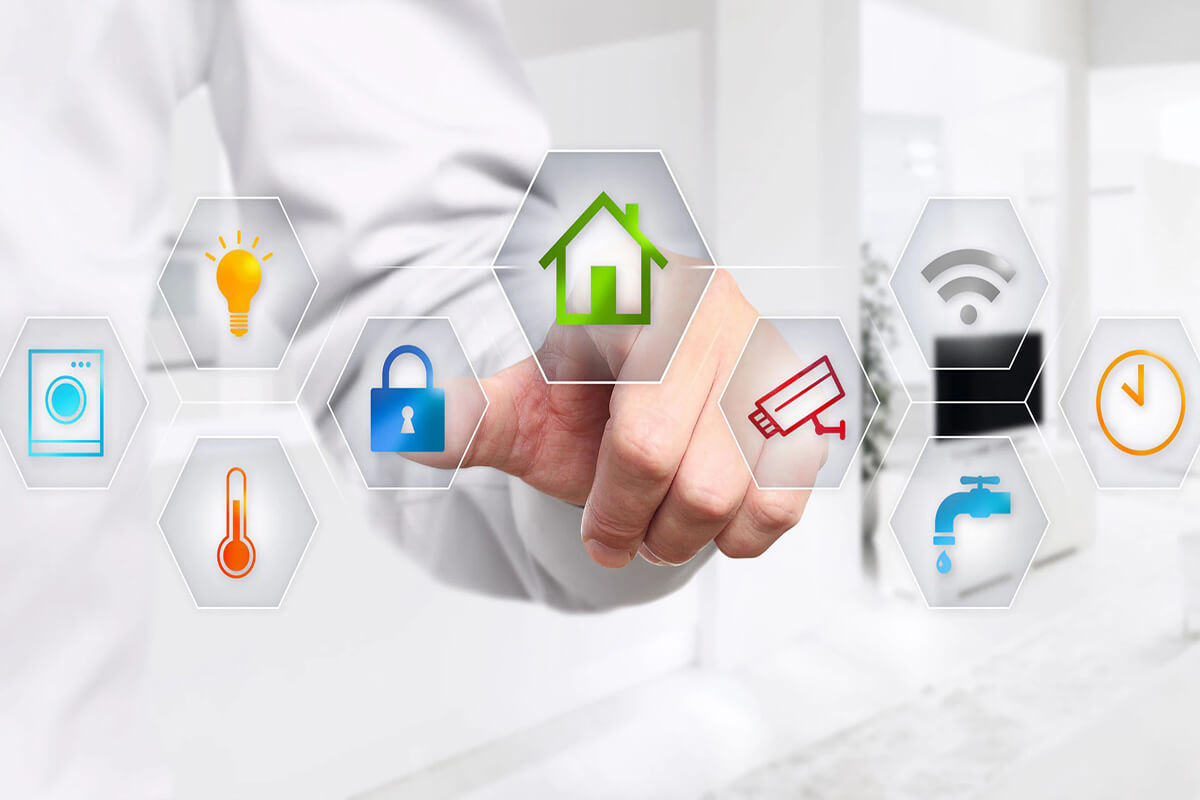
Leave A Comment